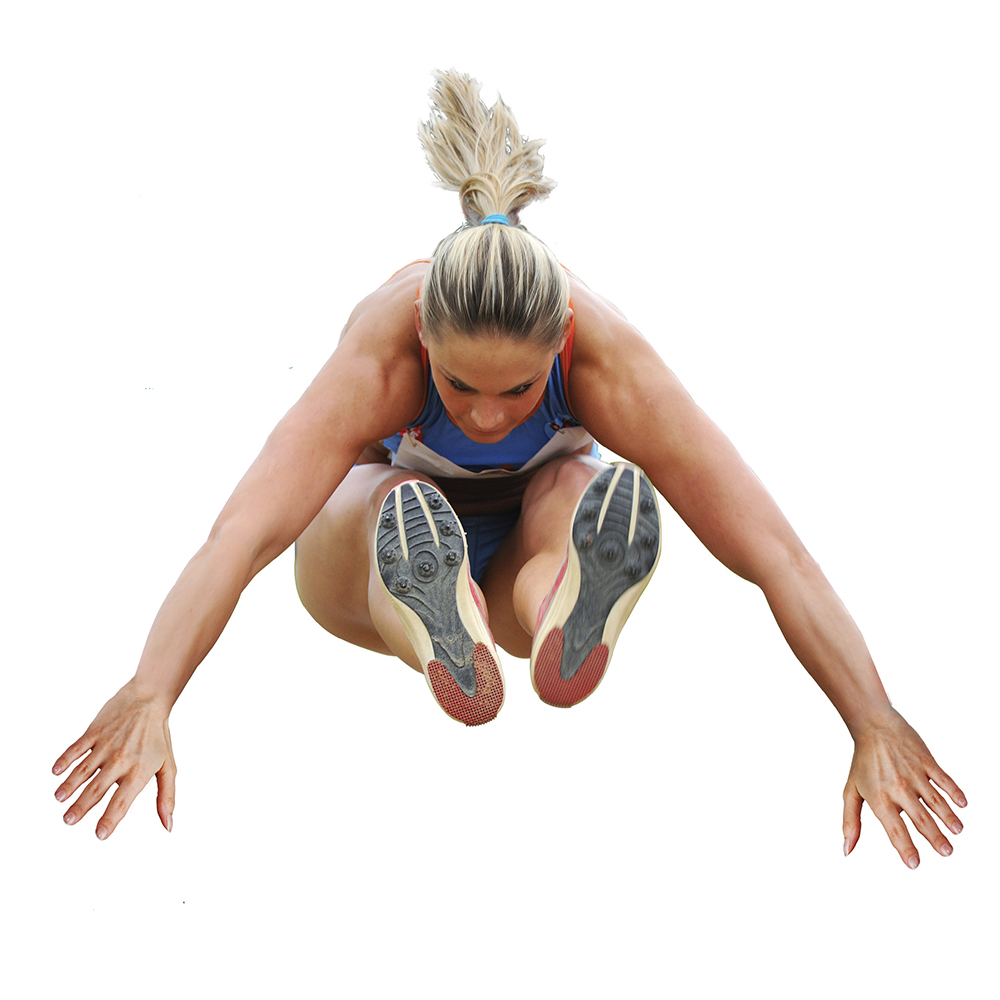By Adarian Barr, USATF Level II Coach in the Sprints, Jumps, Hurdles, and Relays
The First Six Steps to Jumping Far
 The long jump approach is difficult to master. The ability to attain top horizontal speed (velocity) that can be transferred into vertical speed at take-off while maintaining maximum horizontal speed is the difference between a far jump and a not so far jump. A good approach is one where the jumper loses very little horizontal speed at take-off, since the distance of the jump is pre-determine at take-off. Runway speed is different than track speed; the jumper must not only get up to top speed but also must be able to maintain that top speed for the whole approach.
The long jump approach is difficult to master. The ability to attain top horizontal speed (velocity) that can be transferred into vertical speed at take-off while maintaining maximum horizontal speed is the difference between a far jump and a not so far jump. A good approach is one where the jumper loses very little horizontal speed at take-off, since the distance of the jump is pre-determine at take-off. Runway speed is different than track speed; the jumper must not only get up to top speed but also must be able to maintain that top speed for the whole approach.
The question is how to not only get up to maximum speed but maintain it as well.
The first six steps (3left/3right) determine how fast a jumper can and will accelerate and how much momentum he/she will attain and maintain thru the take-off. If the athlete accelerates too fast he/she will start slowing down before reaching the board and if the athlete does not accelerate fast enough he/she will never reach maximum controllable take-off speed.
The First Six Steps are Very Powerful, Deliberate Steps
1. Jumper should start standing facing pit. Hips are square with the pit. Feet are side by side.
2. Jumper should rock back by stepping back with one foot until only the heel of foot for the forward leg is touching the ground. This will also control how far the jumper can step back and prevent the jumper from moving off of his/her mark. The arms should move in sync with the step backwards.
3. As the jumper initiates a forward movement, the jumper should lower his/her hips and drive off of the back leg. While rolling from his/her heel to ball of the foot on the forward leg.
4. Arm swing is very powerful though out the six steps.
5. Jumper should have a forward lean and maintain a forward lean through out the first six steps.
6. The knee of the rear leg or free leg is driven forward, foot is dorsiflexed, and toes are also dorsiflexed. The toes being dorsiflexed will force the jumper to step on the ball of the foot.
7. Those actions are maintained for the next five steps.
Drills to Practice the First Six Steps
1. Standing partner resisted starts: have two athletes face one another, the first athlete places his hands on the shoulder of the second athlete, the second athlete will move backwards as the first athlete leans slightly forward, the first athlete will then work on driving the second athlete backwards for five meters.
2. Speed bounding
3. Starts from a 3 point stance
4. Wall pushes with a six count then hold position for five seconds and repeat
5. Exaggerated lunges: regular lunge but the athlete rises up onto ball of the foot on one leg (support leg). The other leg is raised (free leg), bent at the knee with thigh running parallel and lower leg perpendicular to the ground with foot dorsiflexed. The support leg stays straight while the athlete falls forward, the glutes of the support leg are squeezed to drive the athlete forward, the free leg catches the athlete as he/she falls forward (foot should be flat upon contact with the ground), the trunk of the athlete should stay tall and not lean forward or backwards throughout the movement, when the foot of the free leg contacts the ground the support leg knee should have a slight bend but should not touch the ground. The support leg should be close to being straight still. The athlete drives off of the rear leg to initiate the next lunge. The athlete can use either single or double arm action.
